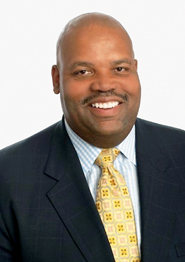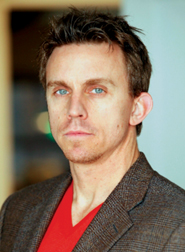Kweku Adoboli, the alleged “rogue trader” at UBS who was arrested in London after supposedly losing $2 billion, has put renewed interest in the desks that handle exchange-traded funds.
From zero to $1 trillion in assets. That’s how much ETFs have grown in 18 years–and this could just be the beginning. Experts predict the next few years could see even more explosive growth in ETFs, having an enormous impact on the entire trading industry.
Earlier this year, ETFs made up between 25 percent and 30 percent of total market volume, but as trading heated up this summer, they rose to as high as 40 percent of volume for some days. That has made the industry pay new attention to these instruments.
“Everyone is looking to support ETFs because they are 40 percent of trading volume,” said Dan McCabe, chief executive officer of Precidian Investments, which specializes in developing ETFs and mutual funds.
When the first ETFs were launched 18 years ago, they were handled by former options traders who had to cut their teeth on the floor of the American Stock Exchange. Expertise in portfolio pricing, portfolio management and indexing are important for trading ETFs, which is why many people who trade them today have a background in index arbitrage.
Traditionally, single-stock traders have rarely gotten involved with ETFs, but with these teenaged instruments finally coming of age and taking their place as a dominant part of the industry, all traders are going to have to get schooled in ETFs.
There are now 1,300 exchange-traded products available, offering exposure to not just equities but commodities, currencies, futures, fixed-income and other asset classes. And more options are coming.

“With an ETF, you can now gain access to pretty much any asset class you need,” said Dan Segal, who leads the ETF arbitrage business at Cantor Fitzgerald & Co. “We have to adapt, and we have to get more complex along with them.”
According to recent data from Birinyi Associates, the top 10 ETFs by trading volume each month now track not just U.S. stocks, but also emerging markets equities, commodities, even the VIX volatility index.
Some of the biggest growth in ETFs has been from funds that track non-stock indexes, and Segal points out that GLD, which tracks gold, recently had more assets than SPY, which tracks the S&P 500. After market turmoil calmed down a bit, GLD’s assets receded and SPY shot back up to its number one slot.
As there are more and more ETFs trading non-equities, it brings up the question of who gets to trade the ETF. Briton Ryan, head of U.S. ETF sales and trading for Newedge, said while equity desks have traditionally had authority over ETFs, the vehicles can also be traded by those with the most knowledge of their underlying assets, whether commodities, bonds, or something else.
Coming Together
Rather then sparking turf wars, though, ETFs tend to bring different sides of a firm together, even though an equities trader and a commodities or bond trader might normally have little reason to collaborate.
“Generally speaking, it’s an opportunity for both groups to work together,” Ryan said. “If you have the right management at your firm, they should be working to utilize the two specialties together to put out a better product to their customers.”
For instance, if a large institutional investor wants to shift assets into GLD to gain exposure to gold, it could push up the price of the ETF. By utilizing the expertise of a commodities desk, however, a firm could instead trade gold futures or bullion and then create an equivalent product for the client at a lower price, according to Ryan.
And institutional investors are increasingly turning to ETFs. In a recent Greenwich Associates survey, nearly half of asset managers and 32 percent of pensions, endowments and foundations said they planned to increase their allocations to ETFs over the next two years
One of the biggest changes brought by the ETF revolution has been the rise of ETF-specific desks, with traders dedicated not to stocks or bonds or commodities, but to trading a multitude of exchange-traded products.
“A specialized ETF trading desk has evolved at a lot of the firms with whom we work,” said Kevin Quigg, head of ETF global capital markets at State Street Global Advisors.

Those sentiments were echoed by Reggie Browne, managing director of the ETF team at Knight Equity Markets. Browne has been trading ETFs since the mid-1990s, and he said the trend is toward ETF-focused desks with ETF-specific traders. At Knight, retail flow still doesn’t go through the ETF desk, but all institutional orders do.
Browne said traders who just focus on U.S. cash equities are going to have to broaden their horizons if they value their careers-learning more about fixed-income, commodities, international stocks and foreign exchange. The days of the simple American stock trader are dwindling.
“The demand for services by those people is decreasing, and for someone to be competitive, they’re changing their skill sets,” Browne said. “Demand shifts, and people look at new opportunities. They’re adapting themselves into other types of trading businesses. Fortunately, ETFs still land a career path for traders.”
ETF traders generally need computer modeling skills so they can model the behavior of a basket of holdings. While computing skills are important, however, they do not outweigh the need to understand the traditional basics of trading.
For instance, Abe Kohen, director of trading strategies at FlexTrade, has both an MBA in finance and a master’s degree in computer science. To him, both are important.
“It’s the combination of the two of them that allows me to truly understand the instruments that we’re trading and how to get the best electronic execution,” Kohen said.
Trading ETFs necessarily requires more of a quantitative or mathematical background than just trading single stocks. David Silber, head of equity derivatives at Jefferies & Co., said that’s because ETF traders need to have an understanding of how various stocks move together as a basket and relative to one another.
“Before, if you knew your stocks really well, that was good enough,” said Silber. “Now it has to be more of not only knowing your stocks, but how they behave in a correlated manner.”
Learning the Ropes
Fortunately, the learning curve does not seem to be as steep as it was for traders a decade ago. Silber said that in the last seven years or so traders have become more sophisticated, in part due to concerted efforts by the industry for education.
Jefferies strives to continually educate its traders about everything that’s changing in the marketplace. Because ETFs have changed so much in recent years, Silber said about 20 percent of the firm’s educational efforts are now aimed at ETFs.
And education isn’t just necessary for traders on ETF-specific desks. All traders have to learn at least something about what has become clearly one of the hottest trading vehicles around. ETFs have become so pervasive that they affect every institutional trading desk, according to Ken Marschner, head of U.S. quantitative trading for UBS.
While UBS does have ETF market-making desks, all of the financial giant’s traders are expected to be well versed in the world of ETFs.
“Pretty much all of our desks trade ETFs in different capacities,” Marschner said. “Many different types of traders and desks have a use for these products.”

The level of expertise a trader needs on ETFs can vary. Andy McOrmond, managing director of the ETF desk at WallachBeth Capital, said traditional SPDRs don’t really trade much differently than traditional cash equities. The problem is second- and third-tier funds can act drastically differently, in part because liquidity can be more of an issue for ETFs.
According to McOrmond, an ETF that trades less than 2 million shares a day needs to be treated differently than an equity that trades less than 2 million shares a day. That’s because the makeup of market participants is so different.
“Arbitrageurs are not always inclined to post their best bids and offers on the screen,” said McOrmond. “An equities trader needs to understand that there’s probably always a better price on an ETF than he’s traditionally seeing. He just has to find the right sources to go get it.”
For McOrmond, the secret is a combination of learning what the ETFs are worth and who the proper players are in providing the liquidity. For more lightly traded ETFs, filling an order at the best price might then have to be done the old-fashioned way-with a phone call rather than a click of a mouse.
For these second- and third-tier names, trading desks might be strong in some areas but not in others. ETFs cut across a wide number of asset classes, and it can be impossible to find a desk that will give you the best price in fixed-income, commodities, international equities, currencies and everything else.
“There are so many different asset classes now,” said McOrmond. “It’s very hard to put together a shop of professional traders that are good in every single asset class.”
In order to trade ETFs beyond the top hundred or so names, a firm needs to be able to go to different sources to get liquidity. But that takes much manpower and brainpower, especially when it comes to products a desk might only trade occasionally.
That’s why shops like WallachBeth have emerged as go-between firms for certain lightly traded ETFs. They act as a sort of broker’s broker, connecting other trading desks with liquidity at prices they might not normally be able to find.
“Traders have to do a good job on every single order, so they can’t drop the ball on an ETF order,” McOrmond said. “That’s where ETF specialty shops like us come in.”
To Be Continued on Monday, October 10, 2011



